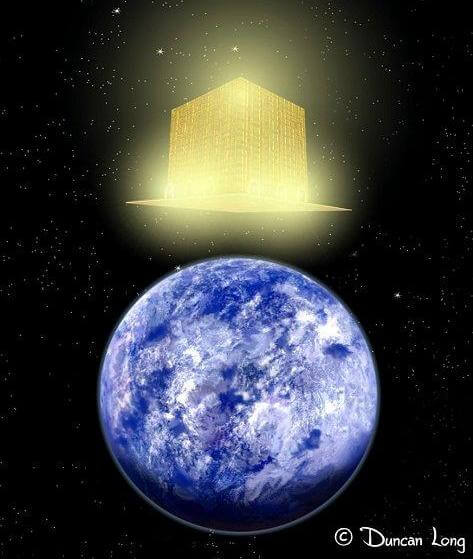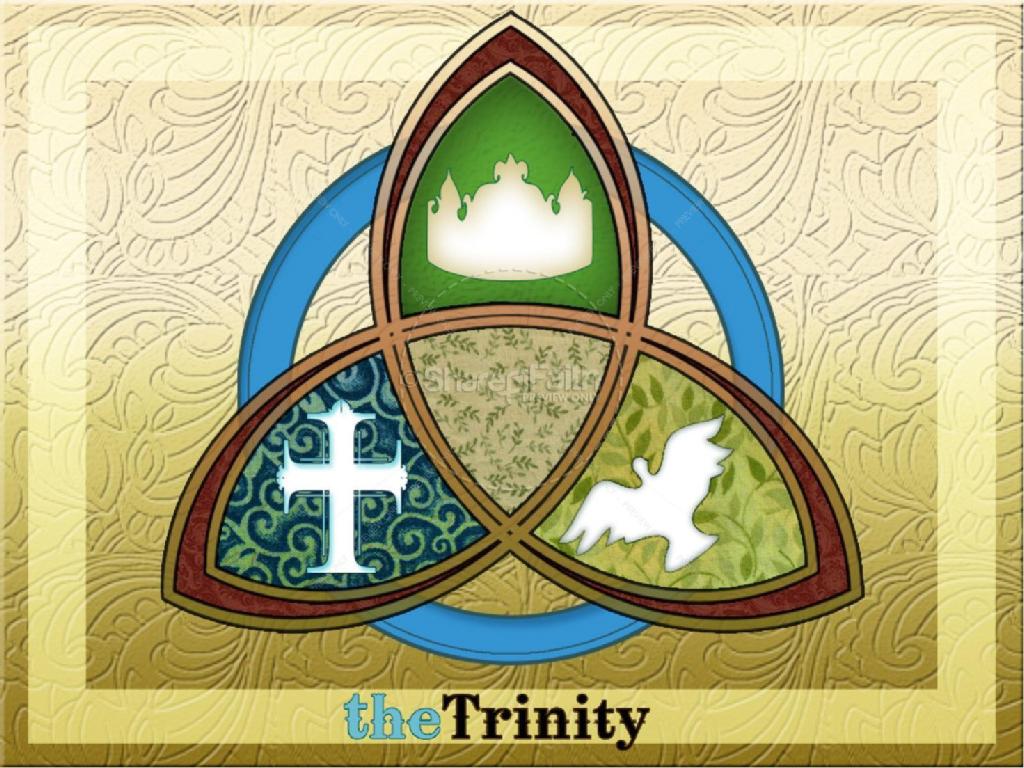The Coming of Jesus: Coming on the clouds

Series Index
- The Coming of Jesus: Introduction
- The Coming of Jesus: Daniel's 70 Weeks
- The Coming of Jesus: Coming on the clouds
- The Coming of Jesus: The Olivet Discourse – Part 1
- The Coming of Jesus: The Olivet Discourse – Part 2
- The Coming of Jesus: Revelation Fulfilled?
- The Coming of Jesus: Our Future Hope - What Now?
Coming on the clouds of heaven
Then the sign of the Son of Man will appear in heaven, and then all the tribes of the earth will mourn, and they will see ‘the Son of Man coming on the clouds of heaven’ with power and great glory.
When people read Jesus saying that he will be "coming on the clouds of heaven with power and great glory" in Matthew 24:30, it often taken to mean that he will be doing that literally as opposed to figuratively.

Careful now, before you put on your heretic hunting hats and grab your pitchforks — let me explain why I say that Jesus wasn't telling his followers he would be surfing across the sky on literal clouds.
As I pointed out in my last post, to truly understand Jesus, and indeed the New Testament, we need to better know the Old Testament texts. This phrase that Jesus used about "coming on the clouds" is a reference to a prophecy in the book of Daniel in which Daniel see's one who 'looks like a son of man' (ie. a person with a human form) 'coming with the clouds of heaven' which has all sorts of implications that we often miss by either not knowing much of the Old Testament, or because we're not Jewish with a better understanding of these prophecies. As a small note too, it's also these visions of Daniel that Revelation in the New Testament takes a lot of its imagery from and describes the same events – I will be touching on that more in the next part in this series.
Often times, our thoughts on these phrases or this kind of prophetic language, is coloured by our upbringing or teaching from a church, or even by secular culture which has taken this imagery and "hollywoodized" it. You need only Google for "apocalypse" or "armageddon" to see this; and although it can be fun from a film watching perspective, it's not entirely helpful if we are letting modern-day secular films and interpretation influence our reading and understanding of Scripture.
Lets begin by looking at what Daniel saw. A little context first: the setting is Daniel in the throneroom of God, watching as the "court sat in judgment, and the books were opened" to begin a judgement process.
Daniel 7:13-14
As I watched in the night visions,
I saw one like a human being
coming with the clouds of heaven.
And he came to the Ancient One
and was presented before him.
To him was given dominion
and glory and kingship,
that all peoples, nations, and languages
should serve him.
His dominion is an everlasting dominion
that shall not pass away,
and his kingship is one
that shall never be destroyed.
That line which says "like a human being" is translated in some Bibles as "like a son of man" which makes Jesus's reference a little clearer when comparing the texts, though the meaning is the same.
So what's happening in Daniel's vision, and why is Jesus talking about it?
First of all, Jesus isn't just making a reference to this vision of Daniel by talking about clouds. Jesus repeatedly calls himself the "Son of Man" throughout his ministry, which is a veiled reference to what Daniel saw. When the Pharisees were questioning Jesus during his arrest, they asked him bluntly if he was the Messiah (Matt 26:63-65), and how did Jesus answer? By making a reference to Daniel 7:
Jesus said to him, “You have said so. But I tell you,
From now on you will see the Son of Man
seated at the right hand of Power
and coming on the clouds of heaven.”
The reaction of High Priest says it all: Then the high priest tore his clothes and said, “He has blasphemed!” This was more than just an idle phrase, this was Jesus making himself equal to God and the Jewish leaders understood this which is why they got so angry. The disciples/apostles understood this about Jesus also, which is what they preached and wrote about and also why they worshipped him (cf. Ps 110:1, Jn 5:18; Matt 26:64, Acts 2:33, Acts 5:31, Rom 8:34, Col 3:1, Heb 1:3, Heb 12:2).

But what's all this got to do with Jesus coming on the clouds? If Jesus is making a reference to a vision in Daniel, which describes something that happens in a purely spiritual realm, then why all of a sudden, does it become a literal, physical event when it concerns Jesus? Daniel's vision is about the Son of Man coming before the "Ancient One" (ie. God the Father) and being presented with a kingdom, power and authority that will never end – which is exactly what Jesus was preaching about when he said the Kingdom of God/Heaven had arrived with his first coming, even though it was not how the Jewish leaders and people had expected it. It is a spiritual and mystical Kingdom that dwells within us, and is evidenced by our lifestyles being that of those who live under a godly reign in this physical world (Lk 17:20-21; Jn 18:36).
So when Jesus says that he is coming again, and doing so "on the clouds," we must remember that this is a reference to a prophecy set within a context of God doing some judging (Dan 7:10). This language isn't unique to Daniel either, but is a typical example of apocalyptic imagery used by prophets.
*A small note to help clarify some terms here: "apocalypse" is a Greek word which simply means "revealed" or "revelation" - as in, being shown something by divine beings/intervention that was once hidden, and is also a genre of writing in Judaism and Christianity encapsulating prophetic texts of this nature. Likewise, "Armageddon" is a Hebrew word which is the name of a place in Israel. Only in modern culture have these words taken on the meaning "end of the world."
With that in mind, let's look at the other references to God coming on the clouds through the Old Testament, and what it means. I'll add some emphasis to some of the verses just so you can see what I'm pointing out.
Isaiah 19:1-2
An oracle concerning Egypt.
See, the Lord is riding on a swift cloud
and comes to Egypt;
the idols of Egypt will tremble at his presence,
and the heart of the Egyptians will melt within them.
I will stir up Egyptians against Egyptians,
and they will fight, one against the other,
neighbor against neighbor,
city against city, kingdom against kingdom;Nahum 1:5
The mountains quake before him,
and the hills melt;
the earth heaves before him,
the world and all who live in it.Isaiah 34:4
All the host of heaven shall rot away,
and the skies roll up like a scroll.
All their host shall wither
like a leaf withering on a vine,
or fruit withering on a fig tree.Ezekiel 20:35
and I will bring you into the wilderness of the peoples, and there I will enter into judgment with you face to face.
Plus also see: 2 Sam 22:8-16; Isaiah 19:1; Ezekiel 30:3; Ezekiel 30:18; Ezekiel 32:7; Ezekiel 34:12; Joel 2:1-2 to name a few more!
Notice a theme going on here?
This brings us right back to the disciples asking "what will be the sign of your coming and of the end of the age" and Jesus saying that he would "come on the clouds with power and great glory." The first thing to take note of here is that the disciples as about the end of the age, although some Bible mistranslate this as "end of the world," which is incorrect since if you check out the underlying Greek text, it uses the word aion (we would understand as "eon" or "age" in English) and not the word for "world" (Gk. kosmos).
Jesus also says that "the sun will be darkened, and the moon will not give its light; the stars will fall from heaven, and the powers of heaven will be shaken" which sounds pretty cataclysmic on the face of it, until you realise that this yet another reference to an Old Testament prophecy, this time from Isaiah, and possibly also Ezekiel as they use the same kind of language. I'll quote the relevant Isaiah passage, but you can read the other references here: Isa 34:4-5; Ezek 32:7-8.
Isaiah 13:1,10
The oracle concerning Babylon that Isaiah son of Amoz saw ...
For the stars of the heavens and their constellations
will not give their light;
the sun will be dark at its rising,
and the moon will not shed its light.
Note that the theme here continues – it is all concerning God visiting a nation with judgement. These nations and cities were destroyed by armies that God used as his weapon of choice, as it were. None of it was a literal event that saw God flying across the sky on clouds, or the stars actually falling out of the sky and going dark! This is all figurative language for a dramatic and drastic change in the world; the heavenly bodies, such as stars and moons etc. are often references to earthly kings and nations, political powers and systems, and their power on or over the Earth.
These are the things that God was going to shake up, blot out and cause to fall: earthly kingdoms, powers and systems. Which is exactly what Jesus was prophesying about in Matthew 24 — the destruction of the Temple and the end of the Old Covenant age, which will usher in the New Covenant in its fullness along with a new age of Grace through and by the life, death, resurrection and forgiveness of Christ!
Jesus's coming which he spoke of here was never to do with a physical return, but was always a prophetic reference to him visiting Jerusalem in judgement, just like God had done in previous generations, when he spoke to the people through prophets using this type of figurative language.
When we can clearly see that all of these visitations by God in the Old Testament, using the same phrases and language that Jesus used, were prophetic and symbolic references to God using armies and other nations to bring war and destruction on something as judgement against them as though God himself had done it, why then do we suddenly expect the complete opposite to happen when Jesus comes?
Now, people will still cling to a physical and literal interpretation of this and use other New Testament quotes to back up that view, such as 2 Peter 3:4,9 which says:
...saying, “Where is the promise of his coming? [...] The Lord is not slow about his promise, as some think of slowness, but is patient with you, not wanting any to perish, but all to come to repentance.
Though the dating and authorship of 2 Peter is doubted in academic circles, if we assume that Peter did write this letter, and did so before his death, then it had to be written before 70 AD which is when the Jewish War was happening and the Temple destroyed. Which is what Jesus used as the focal point in his reference to his 'coming'.
You can't use a quote written prior to 70AD to proof text Jesus not coming yet, though that is what often happens. It's like someone in 1938 quoting H.G. Wells saying in 1914 that WWI will be the "war to end all wars" when history quite clearly shows the opposite.
So to conclude, there's nothing in what Jesus says to suggest anything other than a reference to judgement by God on Jerusalem and the Jewish nation, using the symbolic language of the prophets to make his point, that what was to comes was going to be God's judgement on them!
In the next part of the series I will be taking a closer look at Matthew 24 (and the parallels in the other Gospels) alongside Revelation and seeing how, and if, history shows us that what Jesus prophesied as the signs of his coming were fulfilled.
If you enjoyed this, leave a comment below.
Further Reading:
- http://www.gotquestions.org/biblical-symbolism.html
- http://www.ligonier.org/blog/some-standing-here-will-not-taste-death-unfolding-biblical-eschatology/
- http://livingthequestion.org/coming-of-god/
Leave a comment Like Back to Top Seen 7.1K times Liked 9 times
Enjoying this content?
Support my work by becoming a patron on Patreon!
By joining, you help fund the time, research, and effort that goes into creating this content — and you’ll also get access to exclusive perks and updates.
Even a small amount per month makes a real difference. Thank you for your support!
Subscribe to Updates
If you enjoyed this, why not subscribe to free email updates and join over 864 subscribers today!
My new book is out now! Order today wherever you get books
Recent Posts
Luke J. Wilson | 19th August 2025 | Fact-Checking
A poetic post has been circulating widely on Facebook, suggesting that our anatomy mirrors various aspects of Scripture. On the surface it sounds inspiring, but when we take time to weigh its claims, two main problems emerge. The viral post circulating on Facebook [Source] First, some of its imagery unintentionally undermines the pre-existence of Christ, as if Jesus only “held the earth together” for the 33 years of His earthly life. Second, it risks reducing the resurrection to something like biological regeneration, as if Jesus simply restarted after three days, instead of being raised in the miraculous power of God. Alongside these theological dangers, many of the scientific claims are overstated or symbolic rather than factual. Let’s go through them one by one. 1. “Jesus died at 33. The human spine has 33 vertebrae. The same structure that holds us up is the same number of years He held this Earth.” The human spine does generally have 33 vertebrae, but that number includes fused bones (the sacrum and coccyx), and not everyone has the same count. Some people have 32 or 34. More importantly, the Bible never says Jesus was exactly 33 when He died — Luke tells us He began His ministry at “about thirty” (Luke 3:23), and we know His public ministry lasted a few years, but His precise age at death is a tradition, not a biblical statement. See my other recent article examining the age of Jesus here. Theologically, the phrase “the same number of years He held this Earth” is problematic. Jesus did not hold the world together only for 33 years. The eternal Word was with God in the beginning (John 1:1–3), and “in Him all things hold together” (Colossians 1:17). Hebrews says He “sustains all things by His powerful word” (Hebrews 1:3). He has always upheld creation, before His incarnation, during His earthly ministry, and after His resurrection. To imply otherwise is to risk undermining the pre-existence of Christ. 2. “We have 12 ribs on each side. 12 disciples. 12 tribes of Israel. God built His design into our bones.” Most people do have 12 pairs of ribs, though some are born with an extra rib, or fewer. The number 12 is certainly biblical: the 12 tribes of Israel (Genesis 49), the 12 apostles (Matthew 10:1–4), and the 12 gates and foundations of the New Jerusalem (Revelation 21). But there’s no biblical connection between rib count and these symbolic twelves. This is a case of poetic association, not design woven into our bones. The only real mention of ribs in Scripture is when Eve is created from one of Adam’s ribs in Genesis 2:21–22, which has often led to the teaching in some churches that men have one less rib than women (contradicting this new claim)! 3. “The vagus nerve runs from your brain to your heart and gut. It calms storms inside the body. It looks just like a cross.” The vagus nerve is real and remarkable. It regulates heart rate, digestion, and helps calm stress, and doctors are even using vagus nerve stimulation as therapy for epilepsy, depression, and inflammation showing it really does “calm storms” in the body. But it does not look like a cross anatomically. The language about “calming storms” may echo the way Jesus calmed the storm on the Sea of Galilee (Mark 4:39), but here again the poetic flourish stretches science (and Scripture) beyond what’s accurate. 4. “Jesus rose on the third day. Science tells us that when you fast for 3 days, your body starts regenerating. Old cells die. New ones are born. Healing begins. Your body literally resurrects itself.” There’s a serious theological problem here. To equate Jesus’ resurrection with a biological “regeneration” after fasting is to misrepresent what actually happened. Fasting can indeed trigger cell renewal and immune repair, but it cannot bring the dead back to life. It’s still a natural process that happens...
Luke J. Wilson | 08th July 2025 | Islam
“We all worship the same God”. Table of Contents 1) Where YHWH and Allah Appear Similar 2) Where Allah’s Character Contradicts YHWH’s Goodness 3) Where Their Revelations Directly Contradict Each Other 4) YHWH’s Love for the Nations vs. Allah’s Commands to Subjugate 5) Can God Be Seen? What the Bible and Qur’an Say 6) Salvation by Grace vs. Salvation by Works Conclusion: Same God? Or Different Revelations? You’ve heard it from politicians, celebrities, and even some pastors. It’s become something of a modern mantra, trying to shoehorn acceptance of other beliefs and blend all religions into one, especially the Abrahamic ones. But what if the Bible and Qur’an tell different stories? Let’s see what their own words reveal so you can judge for yourself. This Tweet recently caused a stir on social media 1) Where YHWH and Allah Appear Similar Many point out that Jews, Christians, and Muslims share a belief in one eternal Creator God. That’s true — up to a point. Both the Bible and Qur’an describe God as powerful, all-knowing, merciful, and more. Here’s a list comparing some of the common shared attributes between YHWH and Allah, with direct citations from both Scriptures: 26 Shared Attributes of YHWH and Allah According to the Bible (NRSV) and the Qur’an Eternal YHWH: “From everlasting to everlasting you are God.” — Psalm 90:2 Allah: “He is the First and the Last…” — Surah 57:3 Creator YHWH: “In the beginning God created the heavens and the earth.” — Genesis 1:1 Allah: “The Originator of the heavens and the earth…” — Surah 2:117 Omnipotent (All-Powerful) YHWH: “Nothing is too hard for you.” — Jeremiah 32:17 Allah: “Allah is over all things competent.” — Surah 2:20 Omniscient (All-Knowing) YHWH: “Even before a word is on my tongue, O LORD, you know it.” — Psalm 139:4 Allah: “He knows what is on the land and in the sea…” — Surah 6:59 Omnipresent (Present Everywhere) YHWH: “Where can I go from your Spirit?” — Psalm 139:7–10 Allah: “He is with you wherever you are.” — Surah 57:4 Holy YHWH: “Holy, holy, holy is the LORD of hosts.” — Isaiah 6:3 Allah: “The Holy One (Al-Quddus).” — Surah 59:23 Just YHWH: “A God of faithfulness and without injustice.” — Deuteronomy 32:4 Allah: “Is not Allah the most just of judges?” — Surah 95:8 Merciful YHWH: “The LORD, merciful and gracious…” — Exodus 34:6 Allah: “The Most Gracious, the Most Merciful.” — Surah 1:1 Compassionate YHWH: “As a father has compassion on his children…” — Psalm 103:13 Allah: “He is the Forgiving, the Affectionate.” — Surah 85:14 Faithful YHWH: “Great is your faithfulness.” — Lamentations 3:22–23 Allah: “Indeed, the promise of Allah is truth.” — Surah 30:60 Unchanging YHWH: “For I the LORD do not change.” — Malachi 3:6 Allah: “None can change His words.” — Surah 6:115 Sovereign YHWH: “The LORD has established his throne in the heavens…” — Psalm 103:19 Allah: “Blessed is He in whose hand is dominion…” — Surah 67:1 Loving YHWH: “God is love.” — 1 John 4:8 Allah: “Indeed, my Lord is Merciful and Affectionate (Al-Wadud).” — Surah 11:90 Forgiving YHWH: “I will not remember your sins.” — Isaiah 43:25 Allah: “Allah forgives all sins…” — Surah 39:53 Wrathful toward evil YHWH: “The LORD is a jealous and avenging God…” — Nahum 1:2 Allah: “For them is a severe punishment.” — Surah 3:4 One/Unique YHWH: “The LORD is one.” — Deuteronomy 6:4 Allah: “Say: He is Allah, One.” — Surah 112:1 Jealous of worship YHWH: “I the LORD your God am a jealous God.” �...
Luke J. Wilson | 05th June 2025 | Blogging
As we commemorated the 500th anniversary of the Protestant Reformation this year, the familiar image of Martin Luther striding up to the church door in Wittenberg — hammer in hand and fire in his eyes — has once again taken centre stage. It’s a compelling picture, etched into the imagination of many. But as is often the case with historical legends, closer scrutiny tells a far more nuanced and thought-provoking story. The Myth of the Door: Was the Hammer Ever Raised? Cambridge Reformation scholar Richard Rex is one among several historians who have challenged the romanticised narrative. “Strangely,” he observes, “there’s almost no solid evidence that Luther actually went and nailed them to the church door that day, and ample reasons to doubt that he did.” Indeed, the first image of Luther hammering up his 95 Theses doesn’t appear until 1697 — over 180 years after the fact. Eric Metaxas, in his recent biography of Luther, echoes Rex’s scepticism. The earliest confirmed action we can confidently attribute to Luther on 31 October 1517 is not an act of public defiance, but the posting of two private letters to bishops. The famous hammer-blow may never have sounded at all. Conflicting Accounts Philip Melanchthon, Luther’s successor and first biographer, adds another layer of complexity. He claimed Luther “publicly affixed” the Theses to the door of All Saints’ Church, but Melanchthon wasn’t even in Wittenberg at the time. Moreover, Luther himself never mentioned posting the Theses publicly, even when recalling the events years later. Instead, he consistently spoke of writing to the bishops, hoping the matter could be addressed internally. At the time, it was common practice for a university disputation to be announced by posting theses on church doors using printed placards. But no Wittenberg-printed copies of the 95 Theses survive. And while university statutes did require notices to be posted on all church doors in the city, Melanchthon refers only to the Castle Church. It’s plausible Luther may have posted the Theses later, perhaps in mid-November — but even that remains uncertain. What we do know is that the Theses were quickly circulated among Wittenberg’s academic elite and, from there, spread throughout the Holy Roman Empire at a remarkable pace. The Real Spark: Ink, Not Iron If there was a true catalyst for the Reformation, it wasn’t a hammer but a printing press. Luther’s Latin theses were swiftly reproduced as pamphlets in Basel, Leipzig, and Nuremberg. Hundreds of copies were printed before the year’s end, and a German translation soon followed, though it may never have been formally published. Within two weeks, Luther’s arguments were being discussed across Germany. The machinery of mass communication — still in its relative infancy — played a pivotal role in what became a theological, political, and social upheaval. The Letters of a Conscientious Pastor Far from the bold revolutionary of popular imagination, Luther appears in 1517 as a pastor deeply troubled by the abuse of indulgences, writing with respectful concern to those in authority. In his letter to Archbishop Albrecht of Mainz, he humbly addresses the archbishop as “Most Illustrious Prince,” and refers to himself as “the dregs of humanity.” “I, the dregs of humanity, have so much boldness that I have dared to think of a letter to the height of your Sublimity,” he writes — hardly the voice of a man trying to pick a fight. From Whisper to Roar Luther’s initial appeal through formal channels was, predictably, ignored. He was advised not to make trouble. But as opposition mounted and corruption remained unchecked, the once quiet reformer grew louder. His theological convictions deepened, and his public persona evolved. The lion did eventually roar — but not on October 31. A Catholic Reformer, Not a Protestant Founder It’s vital to remem...
Luke J. Wilson | 20th May 2025 | Islam
You are not alone. Around the world, many Muslims — people who already believe in one God, pray, and seek to live righteously — are drawn to know more about Jesus (ʿĪsā in Arabic). Some have heard He is more than a prophet. Some have sensed His presence in a dream or vision. And some simply long to know God more deeply, personally, and truly. So what does it mean to become a Christian? And how can you take that step? This guide is for you. 1. What Christians Believe About God and Jesus ➤ One God, Eternal and Good Christians believe in one God — the same Creator known to Abraham, Moses, and the prophets. But we also believe God is more personal and relational than many realise. In His love, He has revealed Himself as Father, Son (Jesus), and Holy Spirit — not three gods, but one God in three persons. ➤ Jesus Is More Than a Prophet Muslims honour Jesus as a great prophet, born of the virgin Mary. Christians also affirm this — but go further. The Bible teaches that Jesus is the Word of God (Kalimat Allāh), who became flesh to live among us. He performed miracles, healed the sick, raised the dead — and lived without sin.Jesus came not just to teach but to save — to bring us back to God by bearing our sins and rising again in victory over death. 2. Why Do We Need Saving? ➤ The Problem: Sin All people — no matter their religion — struggle with sin. We lie, get angry, feel jealous, act selfishly, or fail to love God fully. The Bible says: “All have sinned and fall short of the glory of God.” (Romans 3:23) Sin separates us from God. And no matter how many good deeds we do, we can never make ourselves perfect or holy before Him. ➤ The Solution: Jesus Because God loves us, He did not leave us in our sin. He sent Jesus, His eternal Word, to live as one of us. Jesus died willingly, offering His life as a sacrifice for our sins, then rose again on the third day. “But God proves his love for us in that while we still were sinners Christ died for us.” (Romans 5:8) 3. How Do I Become a Christian? Becoming a Christian is not about joining a Western religion. It’s about entering a relationship with God through faith in Jesus Christ. Here is what the Bible says: ✝️ 1. Believe in Jesus Believe that Jesus is the Son of God, that He died for your sins, and that He rose again. “If you confess with your lips that Jesus is Lord and believe in your heart that God raised him from the dead, you will be saved.” (Romans 10:9) 💔 2. Repent of Your Sins Turn away from sin and ask God to forgive you. This is called repentance. It means being truly sorry and choosing a new way. “Repent therefore, and turn to God so that your sins may be wiped out.” (Acts 3:19) 💧 3. Be Baptised Jesus commands His followers to be baptised in water as a sign of their new life. Baptism represents washing away your old life and rising into a new one with Jesus. “Repent and be baptised every one of you in the name of Jesus Christ so that your sins may be forgiven.” (Acts 2:38) 🕊️ 4. Receive the Holy Spirit When you believe in Jesus, God gives you the Holy Spirit to live within you, guiding you, comforting you, and helping you follow His will. “You received the Spirit of adoption, by whom we cry, ‘Abba! Father!’” (Romans 8:15) 🧎 5. Begin a New Life As a Christian, you are born again — spiritually renewed. You begin to grow in faith, love, and holiness. You read the Bible, pray, fast, and gather with other believers. Your life is no longer your own; you now live for God. 4. What Does a Christian Life Look Like? Jesus said: “If anyone wants to become my followers, let them deny themselves and take up their cross and follow me.” (Matthew 16:24) This means: Loving God with all your heart Loving your neighbour — even your enemies Forgiving others ...














